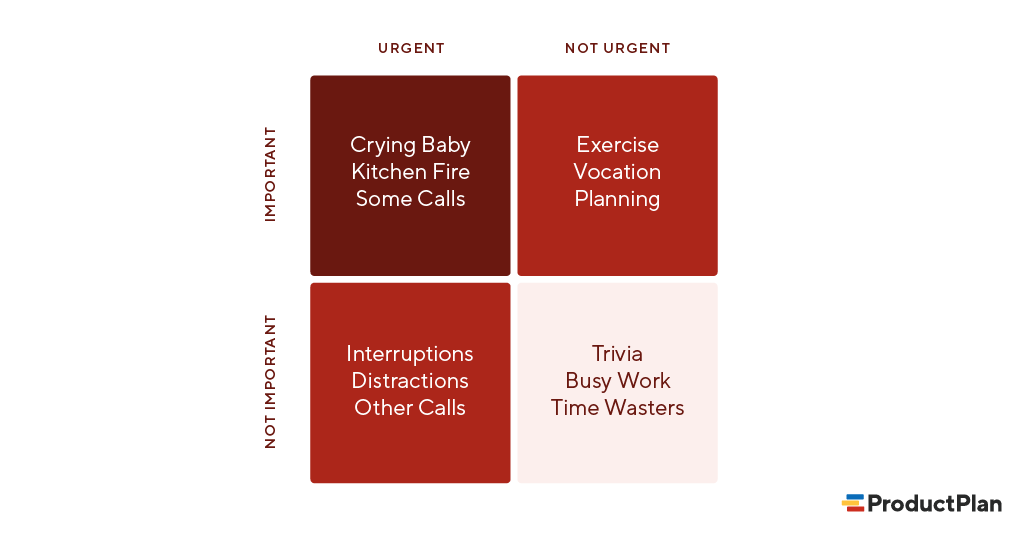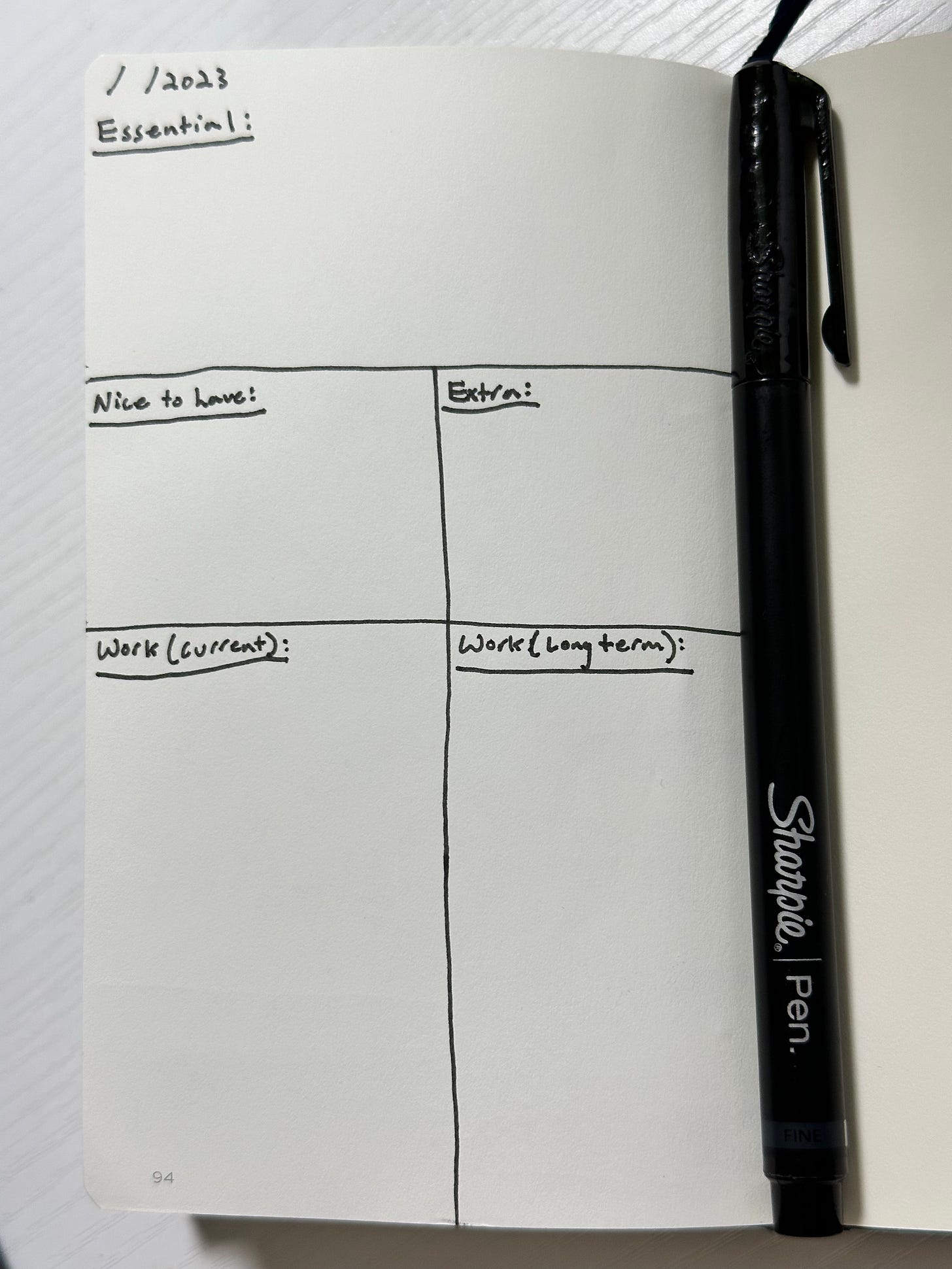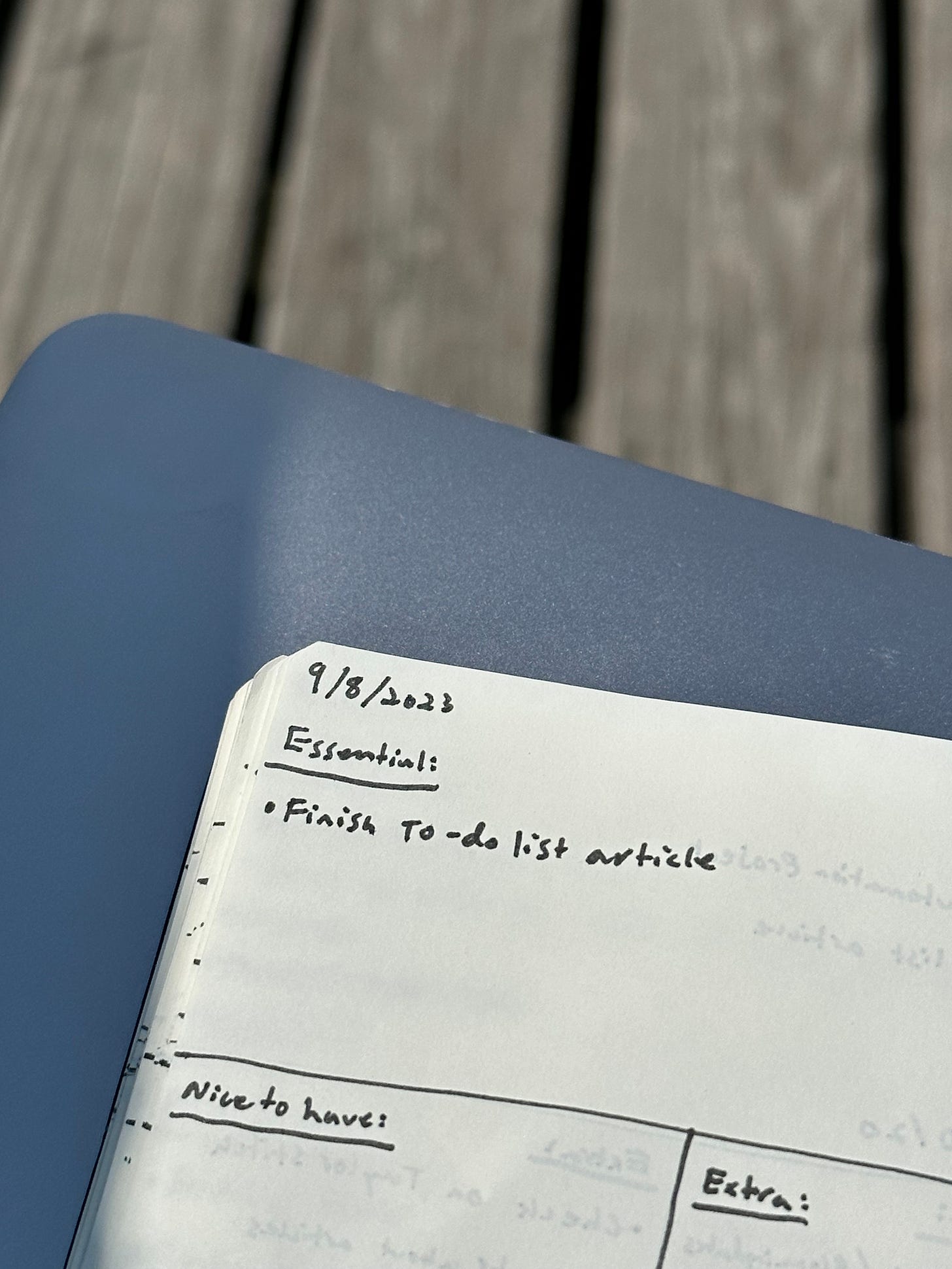A written to-do list is your ship’s compass. Use it, and you’ll stay on course. Forgo it, and you might find yourself heading towards jagged rocks.
Of course, some can navigate without one, but given that its cost is trivial, why take the risk?
Any good to-do list should serve two primary purposes:
Help you remember your longer-term goals and daily tasks; and
Force you to rank them from most to least important.
In other words, a good to-do list is both a memory tool and a brutally honest filtering mechanism.
Our list will force us to decide what is truly important and what is simply the busy work that we indulge in to make ourselves feel accomplished, all the while making precisely zero real progress.
Here’s one way to create a highly effective to-do list without being a nerd about it.
Principles:
Like any good thing, it doesn’t hurt to have some support from fancy sounding principles and laws.
As you’ll see though, these ones are actually useful.
I. The Eisenhower Principle
If there is anyone to consult for advice on effectiveness, it is Dwight D. Eisenhower, American President and World War II general.
In short, he observed that there are “two kinds of problems: the urgent and the important. The urgent are not important, and the important are never urgent."
To address this, he came up with a two-by-two grid known as the Eisenhower Matrix, which allowed him to categorize tasks as important and urgent, not important and not urgent and so on. With these categories, he was able to see through the fog and noise of both war and presidency.
We will keep this Matrix in mind when we are building our list.
II. Parkinson's Law
Parkinson’s law is an observation that tasks will often expand to fill the time allotted for their completion.
For instance:
Give yourself two weeks to complete a project and it will likely take two weeks.
Give yourself five days to complete the same project and it will likely take five days.
If this feels like an oversimplification of the real world, consider a time when you had an unexpected conflict and still managed to complete your regular tasks with a fraction of the time.
We can take advantage of Parkinson’s law by setting aggressive, but realistic time expectations for tasks.
Our Beloved List:
Keep in mind that there is no one correct way to keep a to-do list. Any list that helps you remember things and prioritize is a good list.
The list is comprised of five sections: essential, nice to have, extra, work (current), and work (long-term).
ESSENTIAL:
At the top of the page, this section is most important. It is comprised of both time-sensitive tasks and tasks related to long-term goals. As its position and name suggests, the essential box is to be checked off first. Ignore this rule and anger the to-do list gods at your own peril.
If this sounds abstract, imagine that you have a doctor’s appointment today and that you’d like to improve your writing and learn to code.
Your section might include the following bullets:
Doctor’s appointment at 9 AM
Write for 12 minutes
Solve one coding interview problem
Notice that each bullet is specific. There is no grey area. You cannot “kind of” write for 12 minutes. It is binary: yes or no.
The grey area is our enemy. It clouds our perception of progress, so that we can feel good about ourselves, all the while accomplishing precisely nothing. We need objective measures.
NICE TO HAVE:
This section should be fairly self-explanatory. It is comprised of tasks that are less urgent and less important than in the previous section, but still worth doing.
For example:
Return Amazon package
Message Billie
Get cash at ATM
EXTRA:
Extra is what is left over from the other two buckets. These items are neither important nor urgent. In other words, our lives would be largely unchanged if we were unable to check these off.
Say:
Buy a tennis racket
Buy new cologne
WORK (CURRENT) and WORK(LONG-TERM):
You get the picture. The current is what needs to be done today, and the non-current is what can wait. Although these sections may seem trivial, they are far from it.
They guarantee that:
You’ll never forget what you need to be doing. Nobody’s memory is better than ink on paper; and
You’ll always be addressing the most important tasks and items first.
No matter how much we romanticize hard work, it is no match for being discerning and efficient.
Bonus: getting things done in less time
With a red (or simply non-black) pen. Write a target time next to each important task that is on your list (think the essential and work (current) sections). The target time should be aggressive. If something might take an hour to do, give yourself 40 minutes.
Then, set a timer and work for that amount of time.
You’ll find that you vastly overestimate the time certain tasks will take (think Parkinson’s Law), especially when you are focused. At the very worst, you won’t completely finish what you set out to do, but you gave it X minutes of focused work.
Conclusion:
We hope that after reading this, you are convinced of the immense benefits of keeping a thoughtful to-do list.
To summarize, this habit will not only help you remember what it is that you need to do but allow you to consciously decide what is the most important use of your energy.
If this all sounds intense, then make it easier. There is no objectively right list. Any list is better than no list. Write your tasks and goals on a sticky note or a tissue. There’s no wrong answer. Just start.
Who can honestly say that they wouldn’t like to accomplish more?
Materials:
Unlined Pocket Notebook (~$17.50)
Thanks for reading guys.
If you enjoyed this one, make sure to subscribe to receive posts like this via email and consider sharing with a friend.






